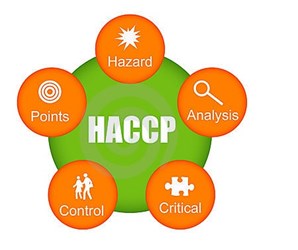HACCP — The Elephant In The Room (Part One Of Three)
By Laurel Maloy, contributing writer, Food Online

Despite its good intentions, the phrase “Hazard Analysis and Critical Control Points” strikes fear into the hearts of food processors
HACCP was designed to be a helpful guide, enabling food manufacturers to identify the most likely (critical) places where contamination could possibly take place. It was a call to action, and since the first phase of its implementation on Jan 26, 1998, it has been a topic of heated discussion and not-so-favorable press. Originally called Pathogen Reduction: Hazard Analysis and Critical Control Point Systems (PR/HACCP); the name itself was, and still is, daunting.
Forget the name! Instead, concentrate on the short acronym and accept the fact that it is unavoidable and here to stay. It is counterproductive to stress over it or to pretend it doesn’t exist; it is doable. The process itself is not that difficult. It is clearly defined, though the language contained in the HACCP regulations may be as discomforting as the name. It may help to think of HACCP as a food-safety insurance policy. Designing a top-shelf, HACCP management system will protect you from the financial and reputational fallout of a food recall. HACCP also figures prominently in the Food Safety Modernization Act (FSMA), as Hazard Analysis and Risk-Based Preventive Controls (HARPC). Though it may have been first implemented more than 15 years ago, it has been updated regularly to fit various food supply chain aspects. It is still relevant today and will continue to be the basis for implementing the highest level of food safety in your plant.
The first two principles of HACCP are:
- Conduct an analysis of potential hazards
- Identify Critical Control Points
These first two principles require a facility to determine the potential food safety hazards and then to identify the preventive measures that can be adopted in order to control the hazard(s). Easier said than done, right? Granted, it is time-consuming, but it is not as hard as it sounds. The process may simply be started with a walk through of the plant. Start at the beginning, where the raw product arrives, and follow one product through to completion. If you have multiple products, the HACCP may be different for each one, so do this for each of the products your plant produces, if it’s applicable. Take notes along the way. The purpose for the walk through is to start identifying the points contamination can potentially occur. The word to focus on here is “Control.” Do you have control over the process at any given particular point? If you do, then you also have the power to make the changes necessary to ensure optimal food safety in your particular facility. These are just some of the possible Critical Control Points to consider:
- During transportation
- Receiving, shipping, and warehousing practices
- Employee entrances and exits with protocols in place for sanitation
- Washing stations
- Sorting and waste disposal
- Each detail of the processing line, including equipment and employee functions
- All points of contact. These are places where the raw or processed product comes into contact with employees, machinery, or surfaces
- Clean-in-place (CIP) and clean-out-place (COP) stations
- Packaging storage and machinery
- Labeling storage, machinery, and monitoring
- Break rooms and Employee restrooms
- Pest control
- Plant maintenance and repairs
It may help to have a more subjective set of eyes take a look at your plant processes. Facility management has become accustomed to a certain way of doing things and is so familiar with the methods, they tend to become mundane. What is considered mundane can escape notice. You have the option of hiring trained professionals to help develop an effective HACCP program, but it may be as easy as tasking trusted employees to take a critical look.
Cross-training employees or management to a function they are less familiar with can be an opportunity for a more analytical look at the processes involved. Encouraging communication between employees and management is another. If done right, you have the opportunity to improve both the quality of your product and the workplace environment. That’s a win-win.
Two follow-up articles will address other principles of HACCP. Stay tuned.
